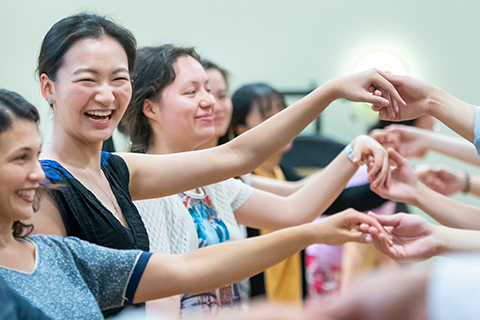In today’s fast-paced world, fostering a sense of community is more crucial than ever. Building a dynamic neighborhood isn’t just about improving infrastructure or attracting new businesses—it’s about creating a connected, vibrant, and inclusive community. One of the most effective ways to achieve this is through well-thought-out community programs. Below, we’ll explore actionable steps, practical examples, and expert insights to help you design and implement impactful programs that bring neighbors together.
Understanding the Dynamics of a Vibrant Community
A dynamic neighbourhood thrives on engagement, diversity, and shared purpose. Residents feel a sense of belonging and pride, which in turn fosters safety, well-being, and growth. Community programs act as the glue that binds people together, providing opportunities to share experiences, skills, and resources.
1. Assessing Community Needs and Interests
The first step in building a dynamic neighborhood is understanding the unique characteristics and needs of your community.
How to Do This:
- Surveys and Questionnaires: Distribute online and paper surveys asking residents about their interests, needs, and concerns.
- Community Meetings: Host open forums where residents can voice their ideas and priorities.
- Data Collection: Analyze local demographics, economic factors, and existing resources to identify gaps and opportunities.
Example: A suburban neighborhood discovered through surveys that residents wanted more family-friendly events and wellness activities. This led to the development of a weekend farmer’s market and yoga classes in the park.

2. Designing Inclusive Programs
Dynamic neighborhoods celebrate diversity and ensure that programs are accessible to all.
Actionable Tips:
- Cultural Representation: Include events that reflect the cultures and traditions of all community members, such as multicultural festivals or cooking classes.
- Accessibility: Ensure programs are accessible to people with disabilities, seniors, and families with young children.
- Flexible Timing: Offer activities during evenings and weekends to accommodate different schedules.
Example: In a diverse urban area, a neighborhood association launched an annual “Culture Day” with food stalls, music, and dance performances representing the community’s many ethnic groups.

3. Leveraging Local Talent and Resources
Your community’s greatest asset is its people. By tapping into local talent, you can create programs that are both cost-effective and engaging.
Practical Steps:
- Volunteer Networks: Create a database of residents willing to volunteer their time and expertise.
- Partnerships: Collaborate with local businesses, schools, and nonprofits to co-host events and share resources.
- Skill-Sharing Workshops: Organize classes taught by residents, such as gardening, coding, or painting.
Example: A retired chef in a small town volunteered to teach cooking classes, which became a popular weekly event and even spurred the creation of a community cookbook.

4. Building Spaces That Encourage Connection
Physical spaces play a critical role in fostering community. Design and maintain spaces that promote interaction and collaboration.
Ideas for Community Spaces:
- Community Gardens: Encourage residents to work together and share fresh produce.
- Pop-Up Spaces: Transform unused spaces into temporary venues for art exhibitions, flea markets, or concerts.
- Shared Amenities: Develop playgrounds, fitness trails, and libraries where neighbours can meet organically.
Example: An inner-city neighbourhood revitalised a vacant lot into a community garden with seating areas. The garden became a hub for workshops, picnics, and relaxation.
5. Hosting Regular Events and Activities
Consistent events create anticipation and a sense of rhythm within a community.
Suggestions for Regular Events:
- Monthly Block Parties: Encourage neighbors to mingle in a relaxed setting.
- Themed Meetups: Organize book clubs, movie nights, or hiking groups based on common interests.
- Seasonal Celebrations: Host events like holiday parades, summer BBQs, or winter craft fairs.
Example: A coastal neighborhood initiated a monthly beach clean-up followed by a potluck lunch, blending environmental activism with social interaction.

6. Measuring Impact and Adapting
To sustain dynamic programs, it’s essential to evaluate their success and make improvements over time.
How to Measure Impact:
- Feedback Mechanisms: Collect post-event surveys to understand what worked and what didn’t.
- Attendance Tracking: Monitor participation numbers to gauge interest and reach.
- Storytelling: Document personal stories or testimonials that showcase the program’s impact.
Example: A neighborhood association reviewed feedback from a youth mentorship program and expanded it to include career workshops after noticing high demand.

Final Thoughts
Building a dynamic neighborhood with community programs requires a mix of creativity, inclusivity, and commitment. Start small, focus on meaningful connections, and grow your initiatives organically. Remember, the ultimate goal is to create a space where every resident feels valued and invested in their community.
By implementing these strategies and adapting them to your neighbourhood’s unique needs, you can lay the groundwork for a vibrant, thriving community that stands the test of time.
